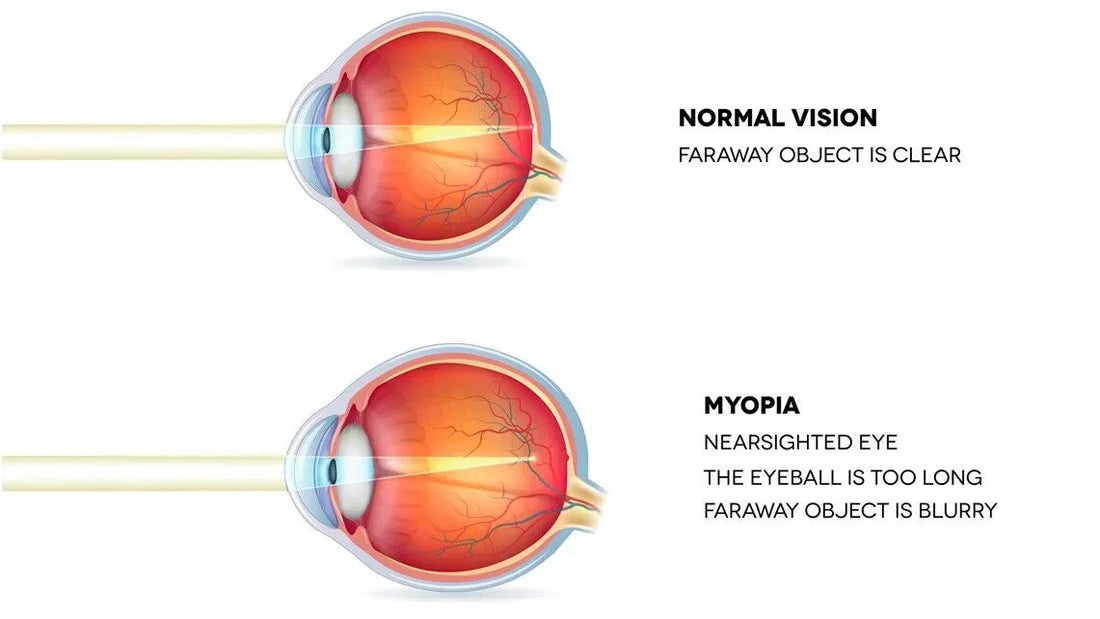Myopia, commonly known as nearsightedness, is a vision condition where close objects are seen clearly, but distant ones are blurry. It's a prevalent issue, affecting a significant portion of the population, especially among younger generations.
Prevalence of Myopia in Europe and Switzerland
Myopia is becoming increasingly common in Europe. A study by the European Eye Epidemiology (E3) Consortium found that overall myopia prevalence was 23.8%, with a higher occurrence in younger subjects; 42.3% among those aged 20-30 years. This trend is not limited to any specific geographical area within Europe and shows a cohort effect of increasing myopia prevalence over time.
In Switzerland, while specific nationwide statistics on myopia prevalence are not readily available, the global trend indicates a rise in myopia cases. The World Health Organization reports that globally, 2.6 billion people of all ages had myopia in 2020, and this number is expected to grow. Given Switzerland's alignment with global health trends, it's reasonable to infer a similar pattern of increasing myopia prevalence in the country.
Understanding the prevalence of myopia is crucial as it underscores the need for proper vision correction and management, particularly for activities where clear vision is essential, such as swimming.
What Causes Myopia?
The exact cause of myopia is not fully understood, but it's believed to be a combination of genetic and environmental factors. A myopic eye is typically longer than normal, causing light rays to focus in front of the retina instead of directly on it. This results in a blurry image for distant objects.
Symptoms to Watch For
If you're experiencing any of the following symptoms, you might be myopic:
- Difficulty focusing on distant objects
- Squinting or closing the eyes to see clearly
- Headaches due to eye strain
- Needing to sit closer to the television or screen
Diagnosing Myopia
A simple eye exam by an optometrist or ophthalmologist can diagnose myopia. They'll use a series of lenses to determine how light focuses on your retina and prescribe the appropriate corrective lenses.
Treatment Options

The most common treatments for myopia are eyeglasses or contact lenses. In some cases, refractive surgery like LASIK may be an option to permanently correct the vision.
For those who engage in water sports, traditional vision correction methods may not suffice. This leads us to consider alternative solutions that cater to specific needs.
The Role of Prescription Swimming Goggles
For swimmers with myopia, seeing clearly underwater is a challenge. Prescription swimming goggles, such as the Agily AV1, are designed to correct nearsightedness, allowing swimmers to see clearly and navigate the pool safely. These goggles are tailored to individual prescriptions, providing a clear vision both above and below water.
Conclusion
With the right corrective measures, such as prescription glasses for daily activities and the Agily AV1 goggles for swimming, individuals with myopia can enjoy clear vision throughout their day-to-day life and during water sports.
Remember, regular eye exams are crucial for maintaining good eye health and ensuring your vision aids are up to date. If you're a swimmer with myopia, consider the Agily AV1 for a clear underwater experience.
We hope this blog post has shed light on myopia and its implications for swimmers. For more information on the Agily AV1 prescription swimming goggles, visit our website and dive into a clearer world today!
References
[1] Christopher J HammondEuropean Eye Epidemiology (E3) Consortium; Myopia prevalence in Europe: cohort effect of increasing prevalence not fully explained by higher educational levels. Invest. Ophthalmol. Vis. Sci. 2014;55(13):1268.
[2] World Health Organization - World report on vision - Executive Summary
[3] Laser Eye Surgery Hub - Guide to Myopia (Short-Sightedness)
[4] Fort Worth Eye Associates - Adult Opthalmology
